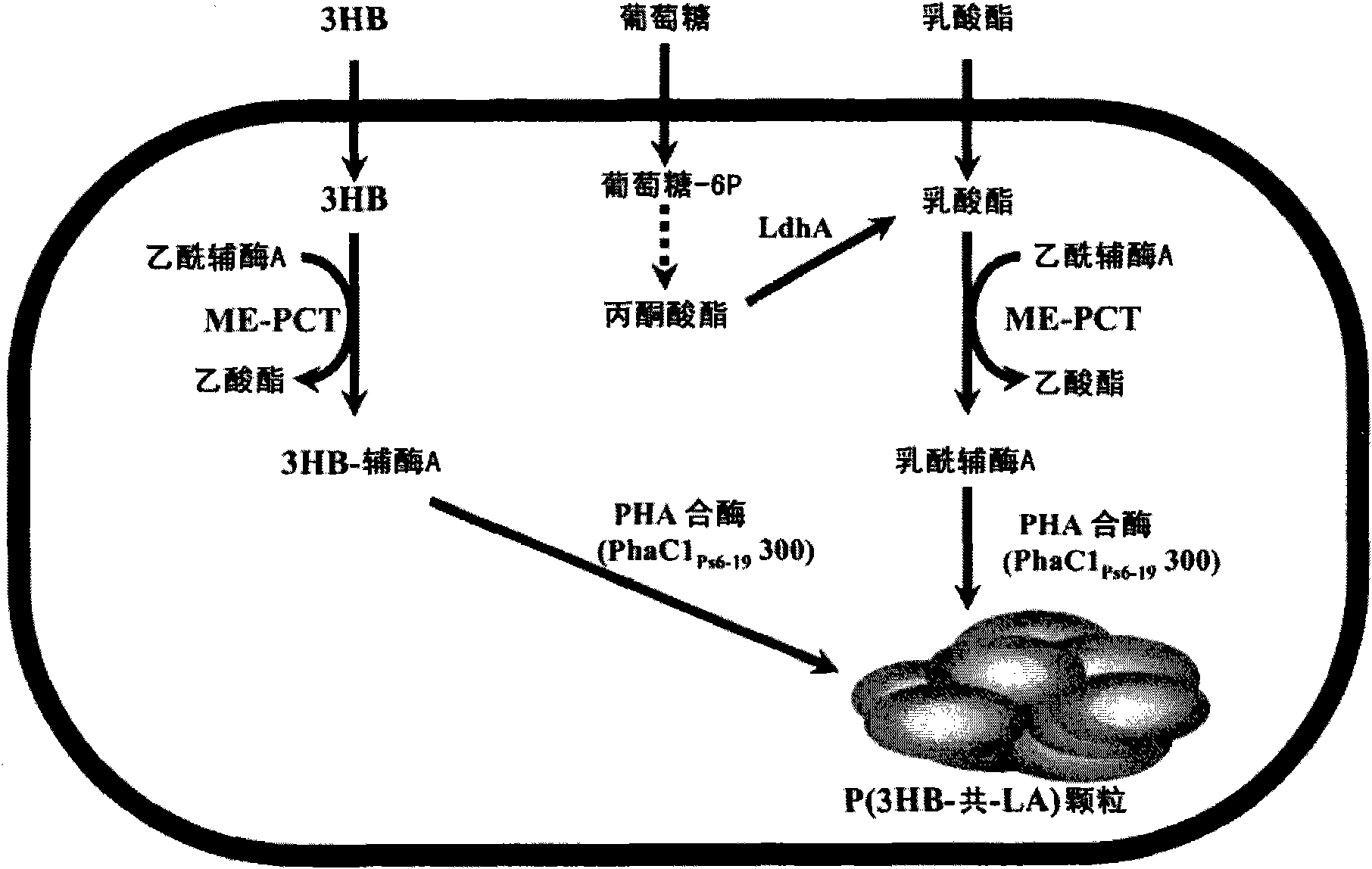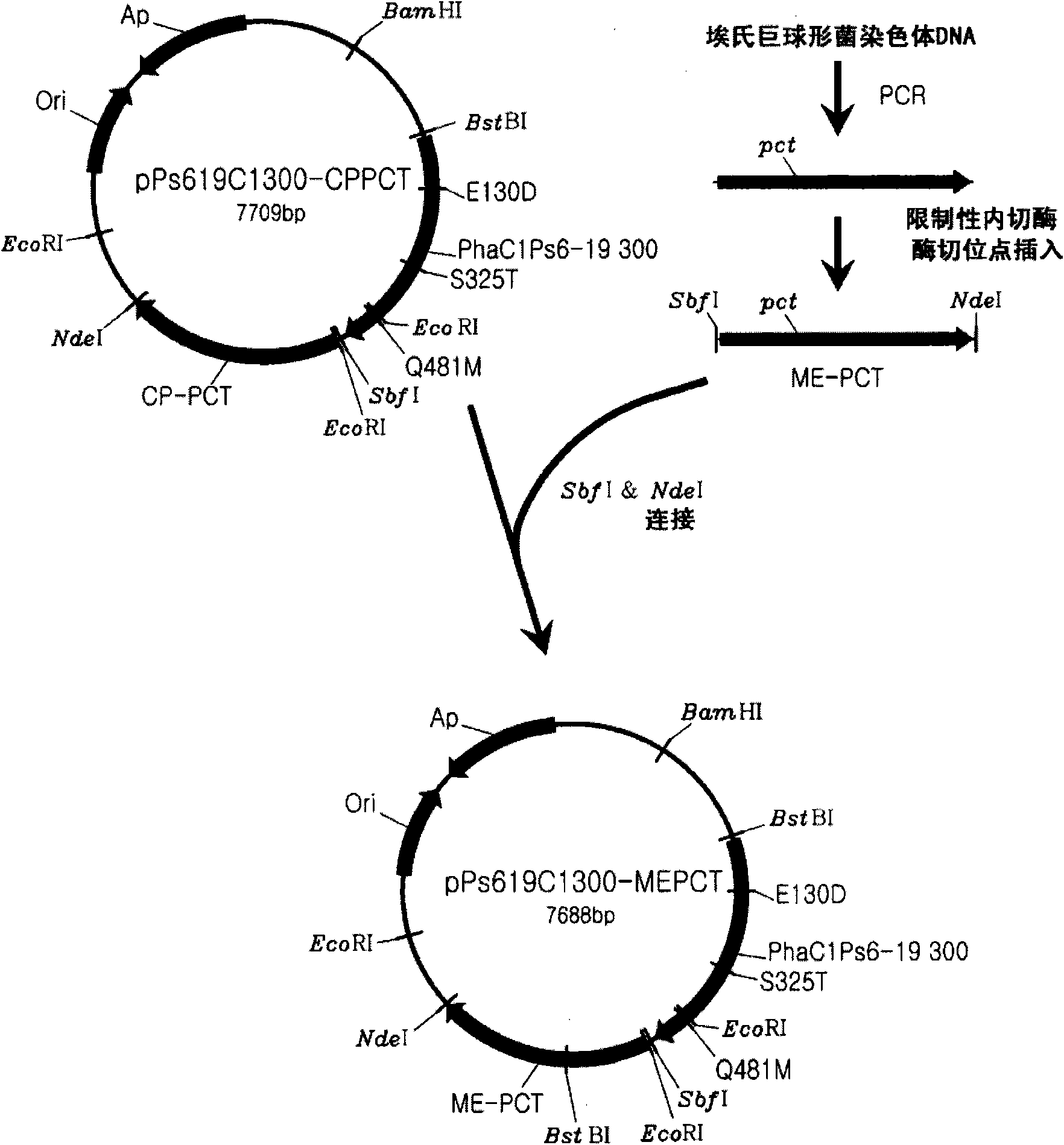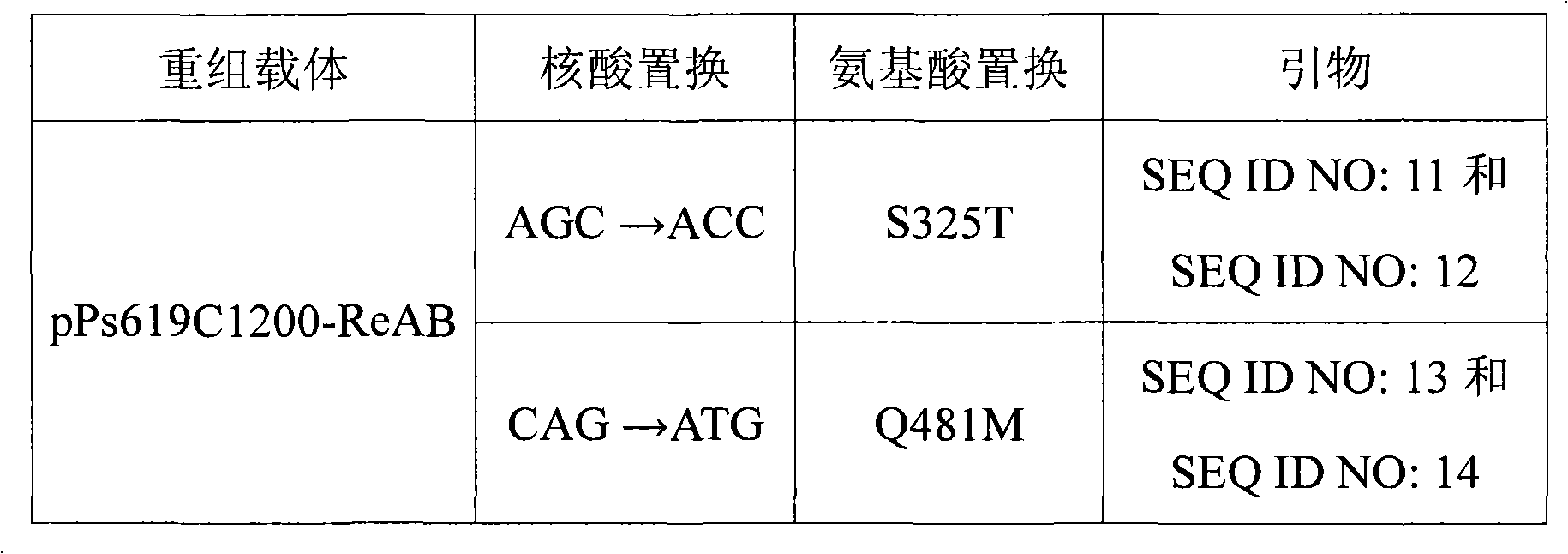Recombinant microorganism having a producing ability of polylactate or its copolymers and method for preparing polylactate or its copolymers using the same
A technology of recombinant microorganisms and polylactate, which is applied in biochemical equipment and methods, botanical equipment and methods, recombinant DNA technology, etc., and can solve problems such as unavailability and difficulty in synthesizing PLA copolymers.
- Summary
- Abstract
- Description
- Claims
- Application Information
AI Technical Summary
Problems solved by technology
Method used
Image
Examples
preparation Embodiment 1
[0054] Preparation Example 1: Cloning of PHA Synthase Gene from Pseudomonas sp.6-19 and Construction of Table delivery vehicle
[0055] To isolate the PHA synthase gene (phaC1) derived from Pseudomonas sp.6-19 (KCTC 11027BP) used in the present invention Ps6-19 ), total DNA of Pseudomonas sp.6-19 was extracted. Based on phaC1 Ps6-19sequence (Ae-jin Song, Master's Thesis, Department of Chemical and Biomolecular Engineering, KAIST, 2004) to prepare primers (SEQ ID NO: 1 and SEQ ID NO: 2), and use the primers to perform polymerase chain reaction (PCR) , so as to get phaC1 Ps6-19 .
[0056] 5'-GAG AGA CAA TCA AAT CAT GAG TAA CAA GAG TAA CG-3' (SEQ ID NO: 1)
[0057] 5'-CAC TCA TGC AAG CGT CAC CGT TCG TGC ACG TAC-3' (SEQ ID NO: 2)
[0058] When the PCR product was analyzed by electrophoresis on an agarose gel, it was identified to correspond to phaC1 Ps6-19 1.7-kbp gene fragment of the gene. To express phaC1 Ps6-19 Synthase, a constitutive expression system of the opero...
preparation Embodiment 2
[0071] Preparative Example 2: Substrate-specific variants of PHA synthase from Pseudomonas sp.6-19 preparation of
[0072] Among the various PHA synthases, type II PHA synthases are known as medium-chain-length PHA (MCL-PHA) synthases for polymerizing substrates with a relatively large number of carbon atoms, and it is expected that MCL-PHA synthases can Applied to the production of PLA copolymer. Although the phaC1 synthase derived from Pseudomonas sp.61-3 is a type II PHA synthase, it differs from the phaC1 obtained according to the present invention Ps6-19 Synthases have a high degree of homology, but it has been reported that type II PHA synthases have a relatively wide range of substrate specificity (Matsusaki et al., J. Bacteriol., 180:6459, 1998), and have also been reported to be suitable for the production of Results of studies in mutations of short-chain-length PHA (SCL-PHA) (Takase et al., Biomacromolecules, 5:480, 2004). Based on the above studies, the presen...
preparation Embodiment 3
[0084] Preparation Example 3: Recombinant vector capable of expressing propionyl-CoA transferase from Clostridium propionicum build
[0085]To provide lactyl-CoA as a monomer required for the synthesis of PLA or PLA copolymers, propionyl-CoA transferase (cp-pct) from Clostridium propionicum was used. It is known that cp-pct is toxic to microorganisms. Typically, in an isopropyl-β-D-thiogalactopyranoside (IPTG)-inducible expression system using the tac or T7 promoter, which is widely used to express recombinant proteins, all recombinant Microorganisms die quickly. For this reason, it is considered suitable to produce PLA or PLA copolymers using a constitutive expression system in which cp-pct is expressed weakly but continuously as the microorganism grows. A fragment obtained by performing PCR on the chromosomal DNA of Clostridium propionicum using primers (SEQ ID NO: 17 and SEQ ID NO: 18) was used as cp-pct. In this regard, the NdeI site present in wild-type cp-pct was ...
PUM
 Login to View More
Login to View More Abstract
Description
Claims
Application Information
 Login to View More
Login to View More - R&D
- Intellectual Property
- Life Sciences
- Materials
- Tech Scout
- Unparalleled Data Quality
- Higher Quality Content
- 60% Fewer Hallucinations
Browse by: Latest US Patents, China's latest patents, Technical Efficacy Thesaurus, Application Domain, Technology Topic, Popular Technical Reports.
© 2025 PatSnap. All rights reserved.Legal|Privacy policy|Modern Slavery Act Transparency Statement|Sitemap|About US| Contact US: help@patsnap.com



